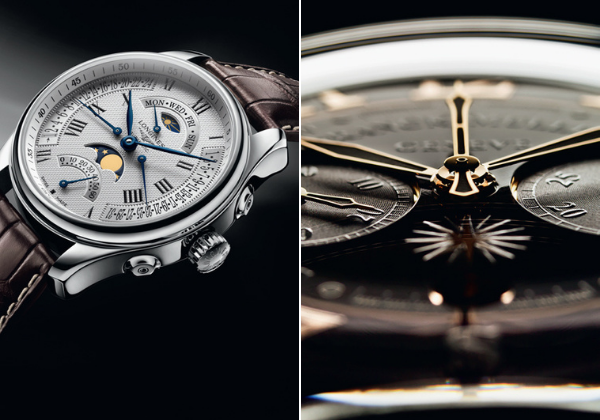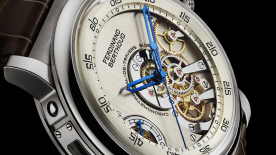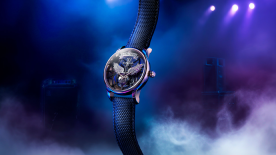Some trends blossom and fade, dying out almost as quickly as they emerge. Reason and fashion have finished off several seemingly promising trends. ‘Chocolate dials’ sporting various shades of dark brown first popped up in the late 2000s, before fading into obscurity and then making a timid comeback in 2020. Brown really wasn’t the right shade with which to start extending the almost infinite palette of colours available to dial-makers (from blue). Multi-retrograde indications made a similarly fleeting appearance. In addition to jumping hours and retrograde minutes, a watchmaking classic since the 1920s, Longines, Milus, Pierre de Roche, Maurice Lacroix and Blancpain all introduced seconds, date, day, and month hands that moved backwards without completing a full rotation. Franck Muller (initially), Roger Dubuis, Cédric Johner, and later DeWitt and (supremely) Gérald Genta all honed their skills and forged their identity by exploiting this alternative display – three or four times on each movement. This technical feat (not always pulled off to perfection) was accompanied by a cluttered appearance that gave the unfortunate impression of a low-cost complication… so much so that it could quickly become unreadable.

Lots of HZ for Nothing
However, the most interesting flash in the pan of the 2010s was undoubtedly high frequency. Having made its debut in the 1960s, a few movements achieved an oscillation speed of 36,000 vibrations per hour – the sole surviving example being Zenith’s El Primero. This performance – equivalent to 5 Hz – long appeared to be an unbreakable barrier given the degree of friction at higher speeds, compromising watches’ power reserves and reliability. The record looked set to stand forever – until 2009, when Audemars Piguet initiated what was to become an all-out competition. Its Jules Audemars featured an AP escapement that beat at 6 Hz. Then came Breguet and its Type XXII chronograph, clocking up 10 Hz, a speed also achieved by the highly chic Classique 7727. Chopard, meanwhile, set its maximum frequency at the symbolic figure of 8, corresponding to the 57,600 vibrations per hour of its L.U.C 8HF. Almost all these accelerations were down to one technical exploit or another: a sophisticated escapement for Audemars Piguet; a balance-wheel pivot held in a frictionless position by a magnet for Breguet. And in almost all cases, the use of silicon to shape the pallet-lever and escape-wheel overcame the problem of energy loss due to friction – one of the material’s key advantages. Three crazy years – and then silence. There are still a few models in the catalogues, but since the initial feverish activity, there have been very few style updates. The idea of convincing the public of technical prowess and even superiority on the basis of actual figures was an alluring one, but while hard quantitative data in the world of watchmaking (where everything is focused on quality) might have had some rarity value, the concept has proved too obscure for the general public – and not very persuasive for connoisseurs of fine watches, either.

*On the occasion of GMT Magazine and WorldTempus' 20th anniversary, we have embarked on the ambitious project of summarising the last 20 years in watchmaking in The Millennium Watch Book, a big, beautifully laid out coffee table book. The Millennium Watch Book is available on www.the-watch-book.com, in French and English.





